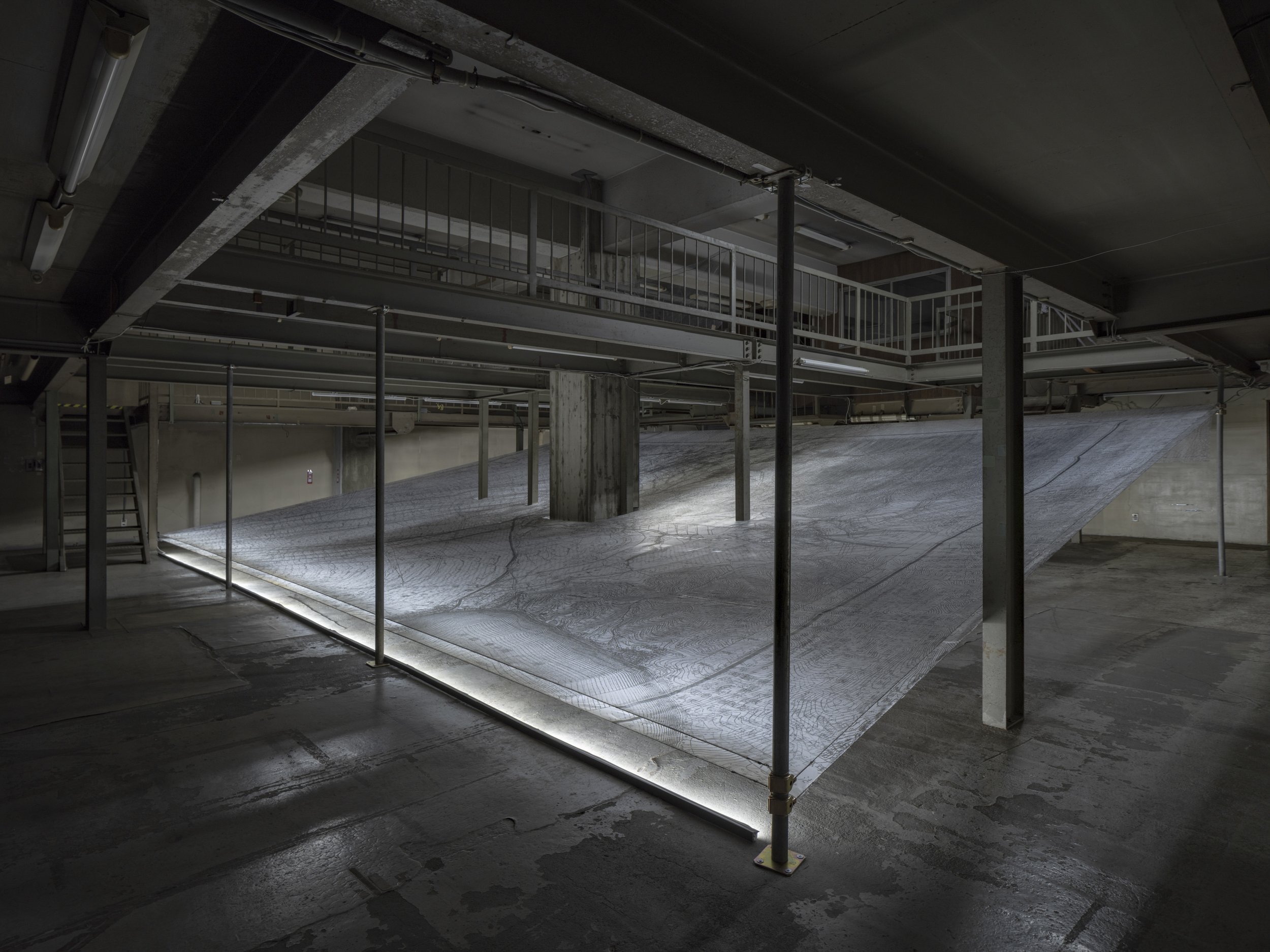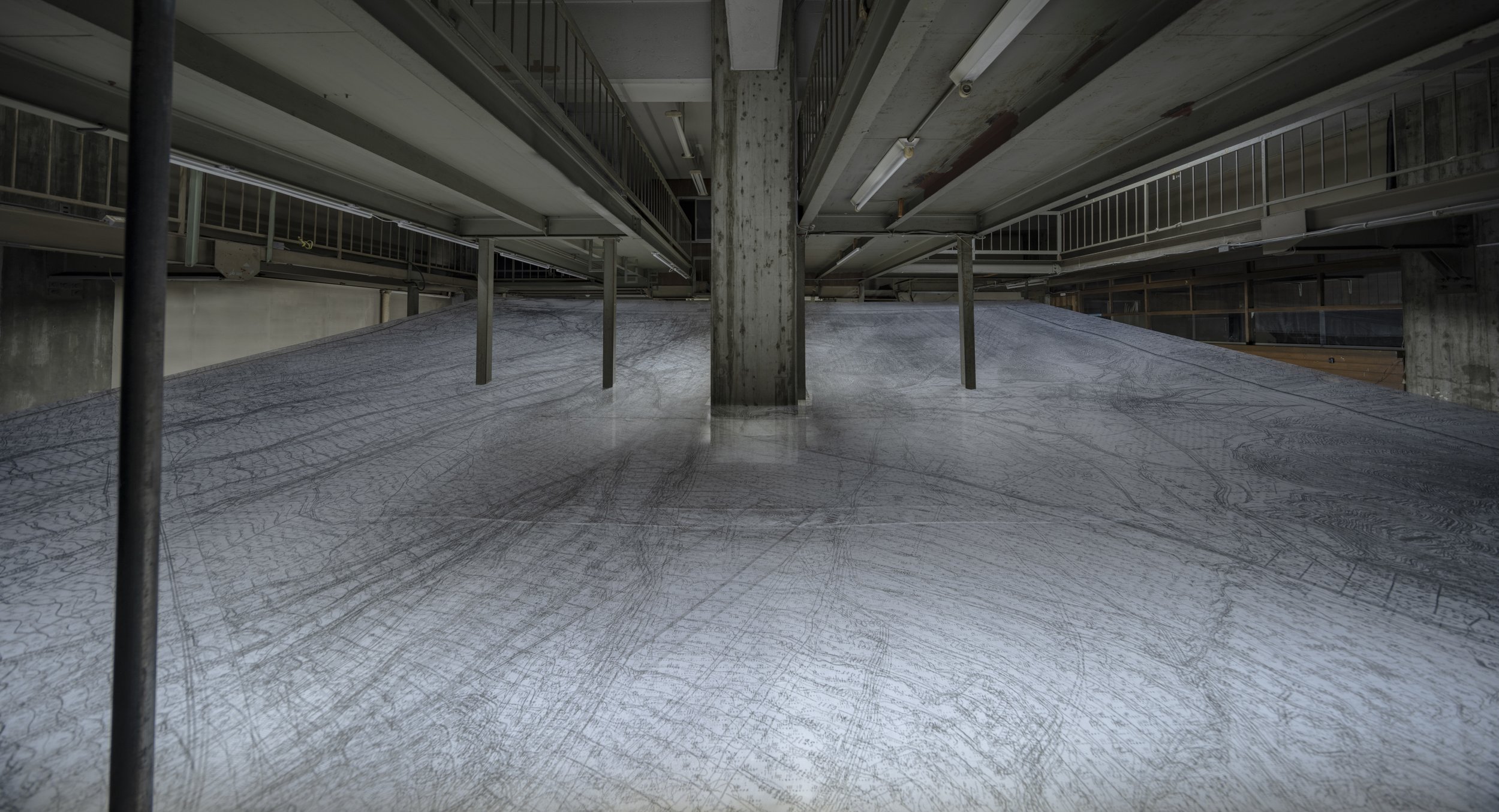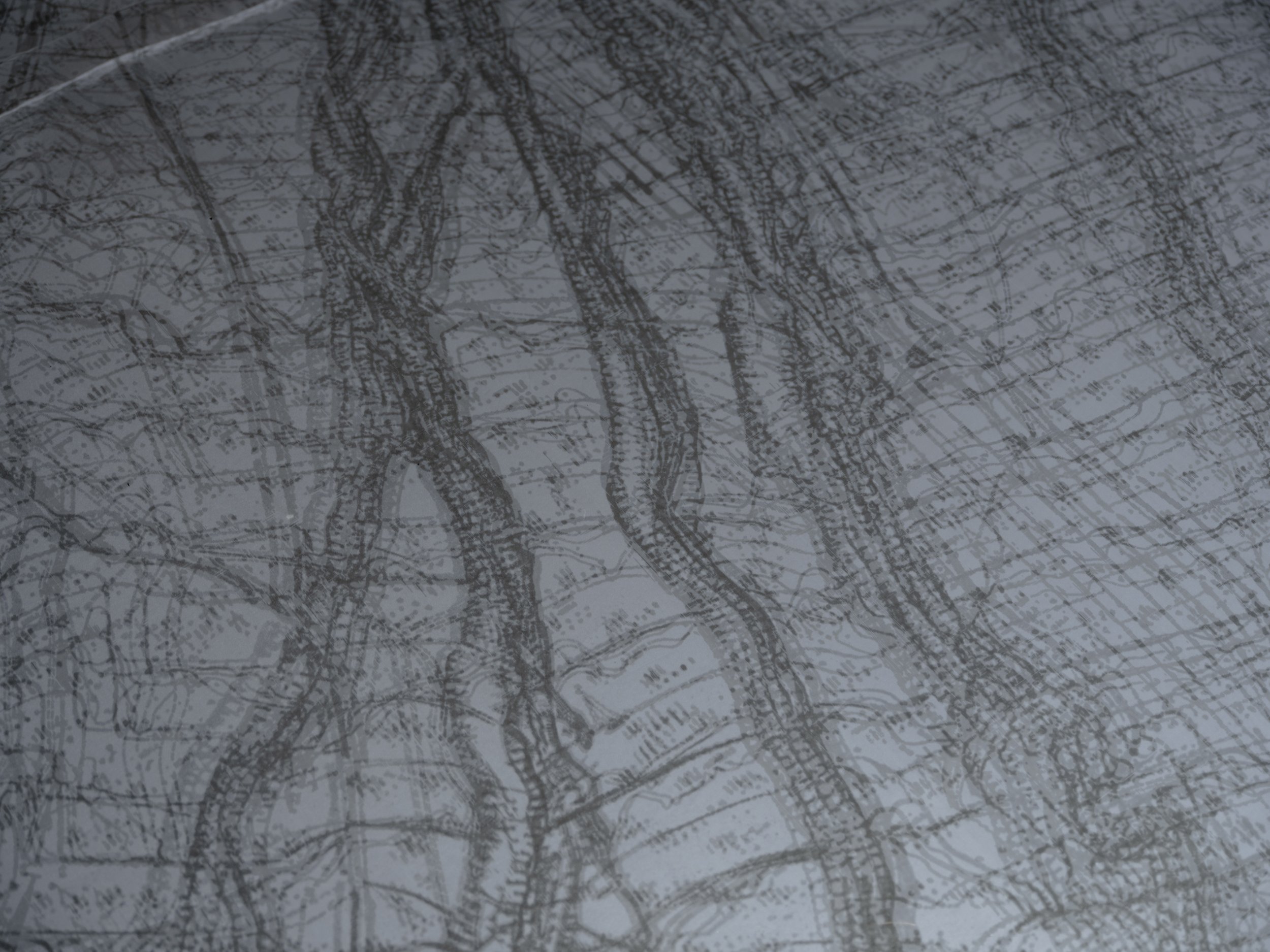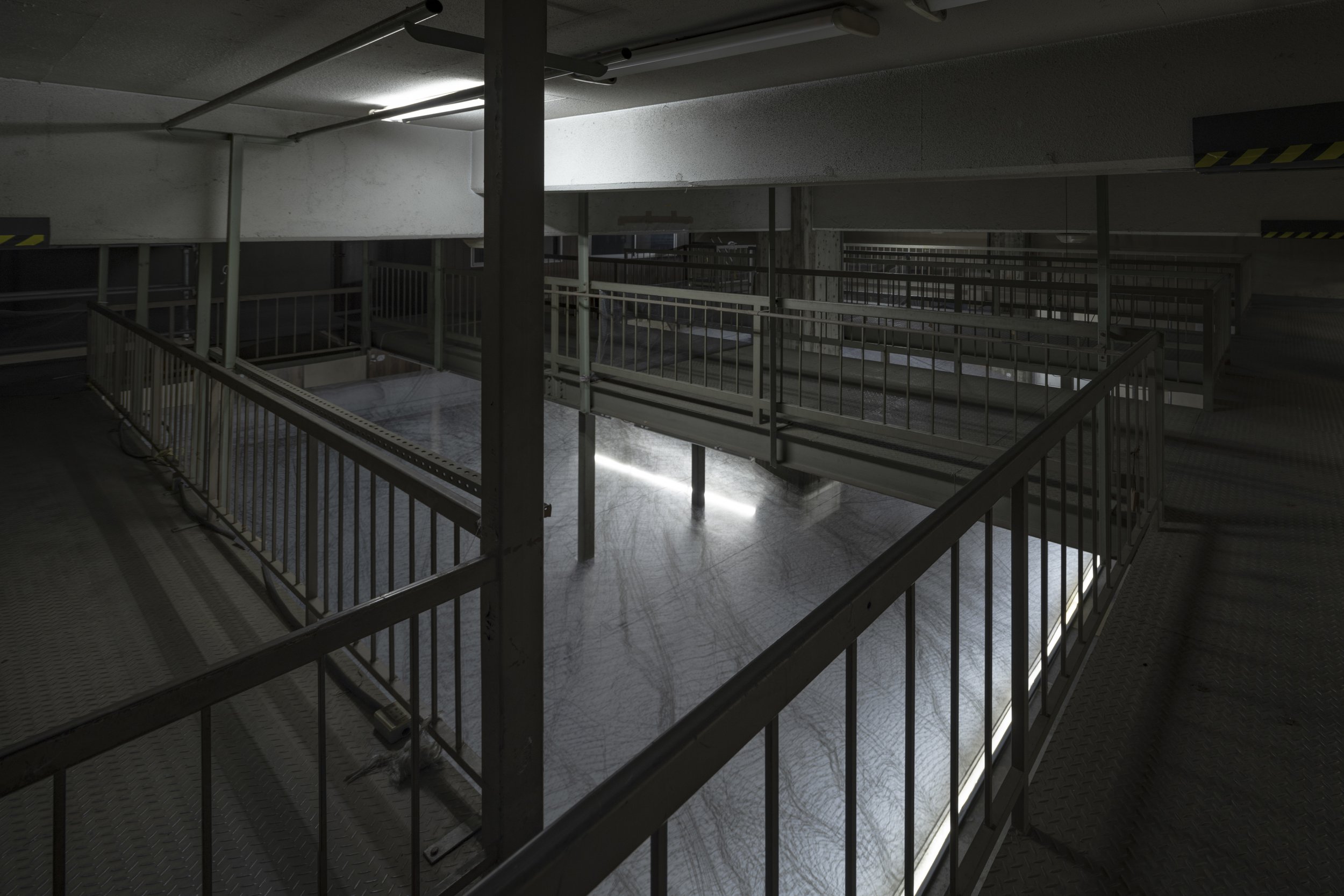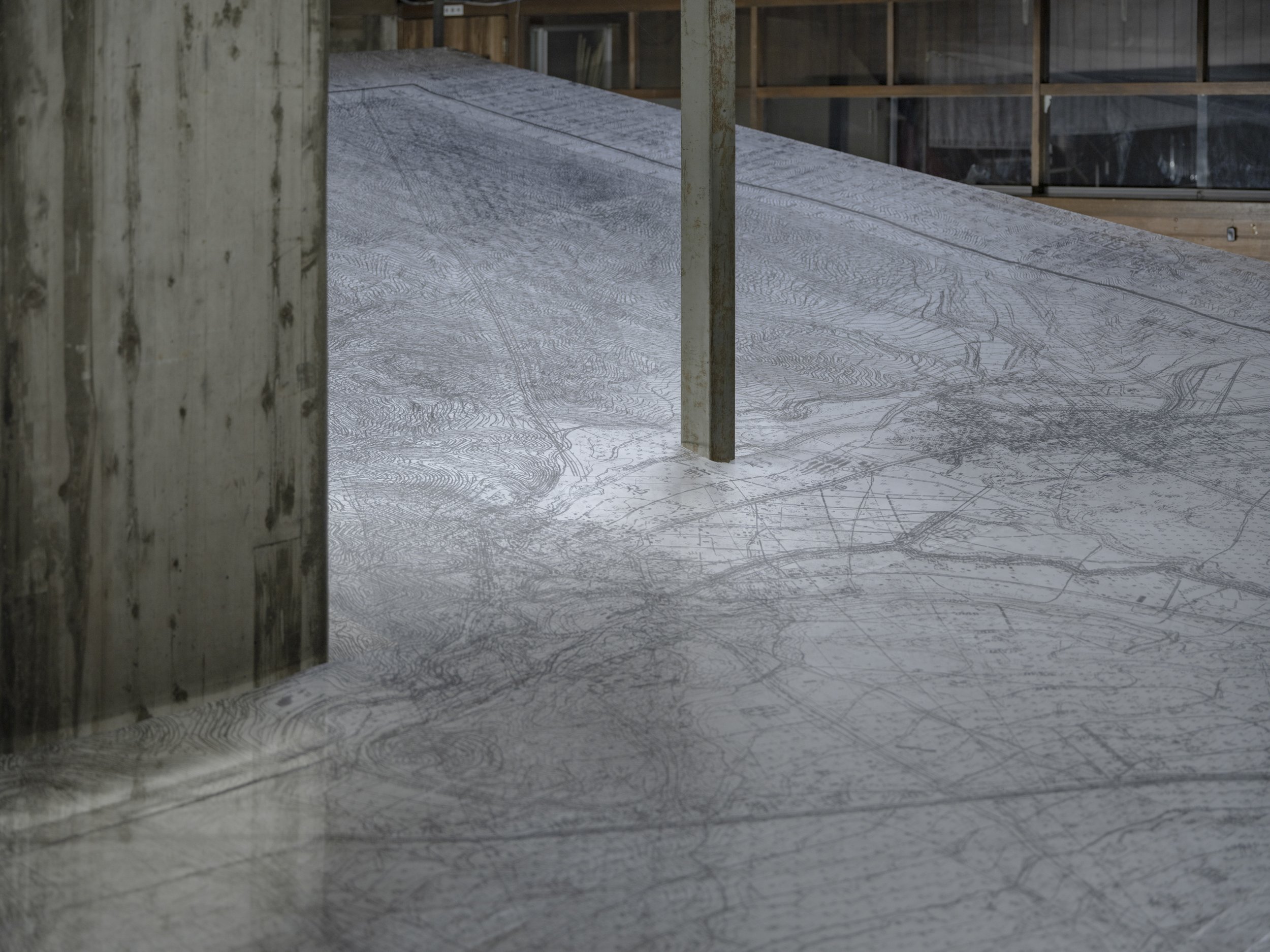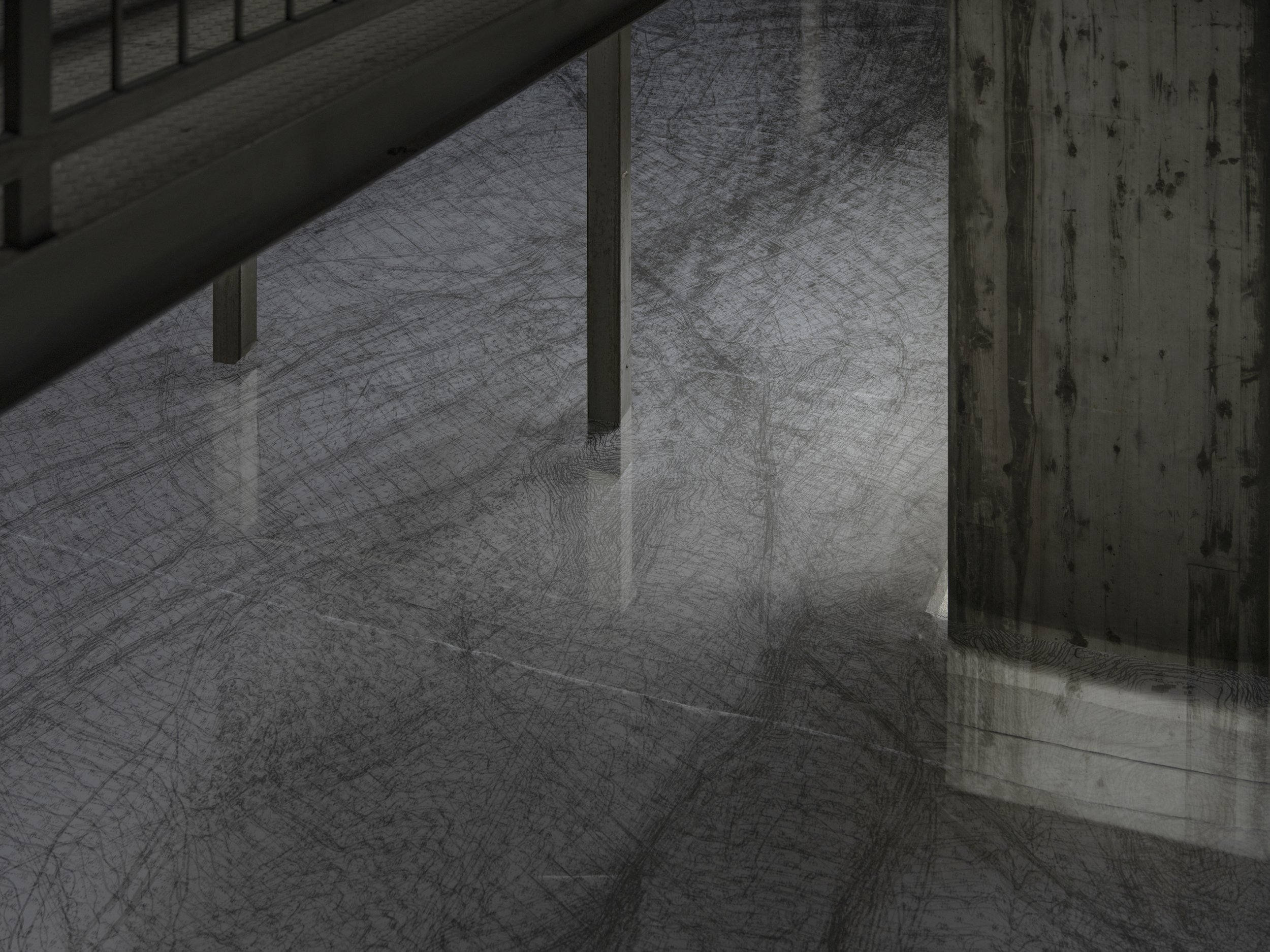顧剣亨は「デジタルウィービング」という、複数のデジタル写真を手作業で一つひとつのピクセルごとに「編み込む」独自の手法によって、複数のイメージが重ね合う写真作品を表現する。先染め生地を織り込む時に複数の糸が重なり合って現れる錯覚から着想した本作では、富士吉田市の様々な時代の地図を「デジタルウィービング」を用いて編み込ませ、二枚の透け感のある生地にプリントすることで、新たに立体感のあるイメージを浮かび上がらせる。その時その場所の意義や史的役割を示してくれる地図という時空間の断面の中には、「生きた歴史」が宿っていると顧は言う。現地リサーチを経て作られた本作では、富士山信仰や、織物業の衰退と発展の推移とともに変わっていった富士吉田市の「生きた歴史」が、二枚の生地の重なり合いの中で錯覚として召喚される。プラットフォーム上から俯瞰する我々の視点の動きに合わせて見え隠れし、時にうねるように遷ろう地図たちの新たな表情は、たしかに「生きている」と形容すべきなのかもしれないし、あるいは亡霊的とも言えるだろう。
Kenryou Gu uses a unique technique he calls "digital weaving," in which multiple digital photographs are "woven" by hand, pixel by pixel, to create photographic works in which multiple images seem superimposed.Inspired by the optical illusion multiple dyed threads create when they areoverlapped during the yarn-dyed fabric process, this work uses "digital weaving" to weave in ma ps of various periods in Fujiyoshida City, and prints them on two sheets of translucent fabric to create an almost holographic three-dimensional image. The history of Fujiyoshida, which has seen the Fujiko (religious worship and the pilgrimage culture of Mount Fuji) and the decline and development of the textile industry, is evident in the multiple maps of different ages and purposes that have been "digitally-weaved" together.Gu says that maps are images that each have historical and situational roles, and their cross-sections can give us a glimpse of a "living" history. In this work, created through on-site field research, The holographic illusions in Gu's work appear and disappear, sometimes undulating and shifting in accordance with the movement of our eyes from the upper platform, and the "living" history of Fujiyoshida is summoned as an holographic image between the overlapping fabrics.
顾剑亨使用一种名为“数字编织” 的独特技法,通过逐像素手动“编织” 多张数字照片,创作出多重图像看似叠加的摄影作品。灵感来源于染线织物工艺中多种染色线重叠所形成的视觉错觉,这件作品运用“数字编织” 技法,将富士吉田市不同历史时期的地图“编织” 在一起,并将它们打印在两层半透明织物上,呈现出近乎全息的三维图像。富士吉田市的历史——从富士讲(对富士山的宗教崇拜及朝圣文化)到纺织产业的兴衰与发展——通过这些不同年代、不同用途的地图在作品中展现得淋漓尽致。顾表示,地图作为图像,各自承载着历史与情境性的角色,而它们的截面则能让我们一窥“活着的” 历史。这件通过实地调研创作的作品,其全息般的视觉幻象随着观者在上层平台上的移动时隐时现,有时还会呈现波动与漂移。通过重叠织物间的全息图像,富士吉田的“活着的” 历史被唤起并鲜活地呈现。
丹原 健翔
Kensho Tambara
